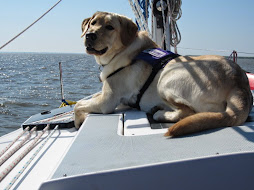Guest post by Susan
Tyson, a long-time volunteer with SSD
For 10 years, we have done what everyone involved in SSD
does—volunteer and help a great program! And like most other people, Bill and I
volunteer in other ways in our community in Carlisle. One of our favorites is
to sponsor an International Fellow from the Army War College at Carlisle
Barracks each year. An International Fellow is a senior military officer who
joins the US officers for a one-year master’s degree in National Security
Studies. Sponsors help the family find a home and get acclimated to the Carlisle
area and also spend the year introducing them to life in the United States
customs. One custom that Americans take for granted is volunteer work and
helping and working with our fellow citizens.
When Colonel Robert Bieleny, his wife Jana, and their
daughters, Katerina and Christina, came to live in Carlisle in 2011-2012, they
had to leave their Golden Retriever, Bella, home in the Czech Republic. They
were delighted to learn that we had dogs! And then they were interested in
learning about service dogs and clicker training. When they found out that SSD
wouldn’t exist without volunteers, they were amazed. They jumped in and
volunteered, supporting SD throughout their year in the midstate. They puppy
hugged and cared for SSD Midge’s Eastern Star pups, helped Crystal and Alicia
(other SSD volunteers) all day in the agility area at PawsAbilities, walked in
the Highmark Walk for a Healthy Community, cared for SSD Scarlett in their
home, attended SSD’s graduation and volunteer appreciation ceremony, and now
back in their home city of Brno in the Moravian region of the Czech Republic,
they are avidly follow SSD on their Facebook Page and blog.
We were fortunate enough to have the Bieleny family invite
us to see their country the way we had shown them the United States. While we
were in the Czech Republic, SSD Julia gave birth to her puppies, and we thought
it was appropriate to call this litter the Czech litter.
The pink-collared female is named SSD Jama, after Jana, who
worked hard to prepare many delicious typical Czech meals.
The purple-collared female is SSD Garnet, named for the
gemstones—garnets—that are mined in the Czech Republic.
The yellow-collared male is named SSD Prague, after the
historic city that is the capital of Czech Republic. A visit to Prague includes
the Sternberg Castle and St. Vitus’s Cathedral (with construction beginning in
1344!) up on the hillside. Down below crossing the river Vlatava (Moldau) is
the Old Town Square, started in the early 1300s, with the fascinating Astronomical
Clock. Further down the street is the new town—dating from the mid-1350s—with
Wenceslas Square, site of the 1989 protest rally that led to the Velvet
Revolution and the end of Communist rule.
SSD Bohemia, the black-collared male, is named for the western
part of Czech Republic. Here in the Bohemian highlands, we visited the medieval
town of Cesky Krumlov, which also has a huge castle perched on a hilltop.
Somewhat smaller but still lovely was the nearby town of Bechyne, with the
military facility where Colonel Bieleny has command of the only engineering
brigade in the Czech Army.
The eastern part of the country is known as Moravia, and
it’s filled with long fields of corn, rye, poppy, sunflowers, and vineyards. The
red-collared male puppy is named SSD Moravia. The Bieleny home is located in a
small town outside the city of Brno in this area. Several mornings, Robert and
Bill went on their morning run over the fields where the battle of Austerlitz
was fought in 1805, when Napoleon was victorious over the Russians and
Austrians.
Brno is also an old city, dating to the ninth century. We
all enjoyed the old center of town, and the St. Peter and St. Paul Cathedral.
At the top of the cathedral’s spires, the bells tolled the hour and made me and
Katerina jump out of our skins!
Also in Moravia are the huge limestone karst caves. We took
a tour of the Punkva Caves, which ended with a boat ride on the river that
flows through and out of the cave.
Enjoy the photos of the Czech pups and wish them well on
their journey to becoming special services dogs! Bill and I had a wonderful
journey as well, thanks to Robert, Jana, Katerina, Christina, and Bella (their
lovely Golden Retriever).




















